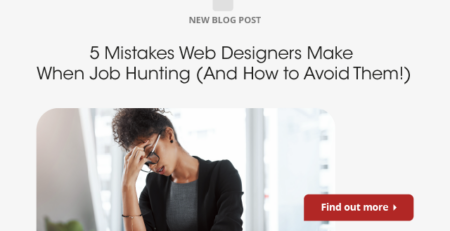Winning An Audience As An Underdog Brand
Many companies have highlighted their lower market share and used it to outpace massive, well-known brands. It might sound counterintuitive, but you can make it work if you build the right narrative.
Read this underdog positioning guide to learn how you can establish the kind of brand personality that turns a lower market position into a tool for growing a loyal audience.
What Is An Underdog Brand?
We’ve seen it in countless movies and books: the young trainee, though lacking in strength or skill, has heart and dedication enough to beat a menacing adversary.
It’s a struggle that people can identify with because we often feel like underdogs in many aspects of our own lives. We have lots of respect for people who aren’t bogged down by life’s many struggles – whether or not they manage to succeed despite their problems.
That’s part of why underdog positioning appeals to people. Brands that adopt underdog positioning in their marketing are claiming that they won’t be discouraged by larger competitors or even by low sales numbers because they’re passionate about what they do.
The underdog brand biography centers around a hard work ethic. A brand might not be the biggest on the market, but its products are better because it’s determined to make them so.
Companies that have used this positioning to great effect focus on the quality of their services, the passion of their team, and the novelty of their ideas. It’s so effective that big businesses mimic underdog voicing even when they are number one.
As the ROI of niche markets grows, the perception that a brand has a small but dedicated following bolsters its marketing efforts in a big way. Underdog positioning taps into this sentiment extremely well.
How Underdog Positioning Builds A Loyal Following
Branding as the more dedicated and passionate underdog creates the opportunity for a personal connection with people. They identify with it on a fundamental level.
According to a 2011 article published in the Journal of Consumer Research, the following identity mechanisms are what make the underdog brand biography so effective:
- Consumers’ identification with the brand; in other words, the brands that match our conception of ourselves (or our ideal conception of ourselves) resonate with us more.
- Self-identification as an underdog; so people who feel the odds are stacked against them or feel they have significant adversity to overcome are impacted to a greater degree – this is why underdog positioning works best during economic slumps and depressions.
- Purchasing for oneself versus purchasing for others, which seems to indicate that identifying with an underdog brand is a personal experience that doesn’t translate as well when we’re buying something for somebody else.
- Cultural identity; some cultures tend to root for the underdog against stronger opponents. Research provides empirical evidence that this is the case in the USA, China, and Japan, among others.
From this research, it seems safe to say the underdog brand biography works because it creates an immediate emotional connection with viewers by tapping into feelings and a winner-loser framework already instilled in them.
An underdog narrative humanizes the brand, describing its desires and struggles as similar to our own. In the best-case scenario, this will make people champion a smaller company against its bigger competitors, resulting in a loyal niche audience that does wonders for business.
Admitting that your brand isn’t at the top of the market is a fortifying bit of honesty, a refreshing departure from the usual “we’re the best, buy us” posturing of the majority of brand messaging.
That’s not to say that brands using underdog positioning shouldn’t still try to convince viewers they have the best product, though. They must use the laws of branding to entice people into buying like any other company does, perhaps with a greater focus than usual.
The combination of pride and self-awareness creates relatable messaging. For a great example, let’s look at the most well-known use of underdog positioning in a modern ad campaign.

Avis, The Underdog
Embracing the identity of underdog companies, positioning themselves as more dedicated and passionate, opens up the opportunity for a personal connection with individuals who resonate with this narrative. This connection operates on a fundamental level.
A 2011 article in the Journal of Consumer Research highlights the effectiveness of underdog brand biographies through various identity mechanisms:
- Consumer Identification with the Brand: Brands that align with our self-conception or idealized self-conception tend to resonate more with consumers.
- Self-Identification as an Underdog: During times of economic downturns or adversity, individuals who feel the odds are against them are more significantly impacted, making underdog positioning particularly effective.
- Personal Purchasing vs. Purchasing for Others: Identifying with an underdog brand seems to be a personal experience that may not translate as effectively when buying for someone else.
- Cultural Identity: Some cultures naturally root for the underdog against stronger opponents, as evidenced in the USA, China, Japan, and other regions.
This research suggests that the underdog brand biography works by establishing an immediate emotional connection with viewers, tapping into pre-existing feelings and a winner-loser framework.
Presenting an underdog narrative humanizes the brand, depicting its desires and struggles as relatable to the audience. In the best-case scenario, individuals may champion a smaller company over its larger competitors, leading to a loyal niche audience that significantly benefits the business.
Acknowledging that a brand isn’t at the market’s pinnacle reflects a fortifying honesty, a departure from the typical boastful posturing found in most brand messaging.
This doesn’t imply that underdog-positioned brands shouldn’t strive to convince viewers they offer the best product. They still need to employ branding strategies to attract customers, perhaps with a heightened focus.
The fusion of pride and self-awareness results in relatable messaging. A notable example of underdog positioning in a modern ad campaign illustrates how this combination can be effectively employed.
Essential Elements of an Underdog Brand Biography
Not everybody is going to start in the same position as Avis did. Many who followed in their footsteps with their underdog branding campaigns weren’t number two in their respective markets and they didn’t have a service-oriented business model like rental car agencies do.
Regardless of the particular product or industry context, brand biographies typically include a few of the following themes to create an underdog narrative:
1. Humble Beginnings
Reach for the artisanal or local food brands next time you’re at the grocery store and you’ll probably see some variation of this theme. One or two upstart founders with few resources determined to bring the best product possible to the public.
2. Passion
They just know they have to get this product into people’s hands. It’s their calling, something either discovered by charming happenstance or practiced religiously all their lives.
3. Loss or Disadvantage
Either the dream didn’t pan out (at first) or they’re fighting for their lives against much larger competitors. In some cases, both storylines are happening simultaneously. You can’t be on top if you want to be an underdog, so your audience needs to know what you’re struggling against.
4. Redemption
Whatever disagreeable circumstances the brand was once in, their can-do attitude, passion, ingenuity, and the quality of their product got them out.
5. Determination
This is a little different than passion. Long-term dedication is important to include in the brand biography early on because once the company isn’t so small anymore, the audience you’ve won will want to see that you haven’t lost your passion or forgotten your roots.
6. Authenticity
Whether you want people to believe you’re a valiant underdog or a green brand, you have to mean what you say and your audience needs to see you as a worthy source of that information.
Many big companies that try to position themselves as underdog not only fail in the endeavor but also invoke backlash from viewers who see dishonest marketing as an attempt to take advantage of the public.
Remember that the Avis campaign centered on a frank acknowledgment of readily provable circumstances. If they had soared to a 70-percent market share and maintained that second-best posturing, their words would ring hollow and their audience would surely have abandoned them.
Who Can Be An Underdog?
Not every brand will find success with underdog marketing. Sometimes the product isn’t well-suited for the downtrodden narrative, as is the case with health and safety products. A rental car company can be second-best, but you don’t want a doctor admitting to such a thing.
If the product doesn’t have a significant degree of customer service or craftsmanship, the underdog biography might not land. An insurance company can be an underdog because they can promise a commitment to serving and paying attention to their customers. Car companies don’t have much in the way of customer service but they can promise that their passion spurs them on to build better cars.
But immediate-use products, the ones we don’t think much about before buying, frequently don’t have significant face-to-face interaction or a legitimate claim to passion. A toilet paper company couldn’t convince people its founders were driven to create their product line, for example.
Companies need to understand the nature of their products before trying to pursue an underdog branding narrative. That means knowing how people view the brand, not just what the company thinks of the brand.
Similarly, companies need to understand their circumstances. Large corporations usually have a hard time proving they’re passionate people who are facing great adversity. Starting in a garage is a nice motivational story, but no one in their right mind would believe a global brand like Amazon is anywhere near the same company that it was when it was founded in 1994.
How To Win Your Audience As The Underdog
Although there are no hard and fast rules for making this approach work, adhering to these guidelines will make success more likely.
- Focus On Your Product
If you’re passionate about your product then let the proof of the pudding be in the eating. That doesn’t mean you have to let your product speak for itself entirely, but use it as evidence of the brand’s passion.
- Be A Changemaker
The brand is going up against impossible odds because it believes in something, so you need to articulate what that is and why it’s such a groundbreaking and necessary disruption of the status quo.
- Set Yourself Apart
Why are you uniquely qualified to accomplish what you’ve set out to do? What about the brand’s goals assure your success even at great odds?
Make sure whatever you claim in this regard is apparent when people look at your product. If your brand is distinctive because it is more environmentally friendly, then make sure the packaging is demonstrably recyclable and sustainably sourced.
- Put Second-Best To Work
A rental car company can promise shorter lines if they have fewer customers. Think of what your brand can offer and make that a central component of your advertising.
Most companies have some degree of customer service so they can assure better care on account of lower numbers. Higher quality craftsmanship, safer conditions, and greater exclusivity are a few other ways you can make a lower customer base more appealing for your audience.
- Do Better
Avis’ ad campaign wouldn’t have worked if people didn’t find better cars in their inventory, faster service at their counter, and cleaner conditions in their vehicles. Whatever you promise you can do by virtue of your underdog status, don’t forget to deliver on your promise.
- Be Real
As we’ve already discussed, authenticity is essential in all sorts of ways. When it comes to underdog branding, the company needs to level with its audience and avoid trying to build up false narratives.
This is easily done with marketing as long as you have the right mindset. Managers and decision-makers should already have plenty of data about the company and where it stands. When you get that kind of information, ask yourselves if it’s suitable to use in advertising exactly as you received it.
- Find A Niche Market
Niche competition is more prevalent than ever. A wider variety of products has given consumers the ability to select products that are tailored to their individual needs and preferences.
That niche you occupy can also be your motivation as an underdog brand. A company specializing in left-handed products can show its passion for making the world accessible to everyone. Green brands aren’t just trying to come up with new products to sell, they’re driven by a desire to make the world nicer and drive costs down for their customers.
As you can see, identifying your niche market helps satisfy many other guidelines in this section. Businesses can set themselves apart, be changemakers, focus on their products, and be real if they focus on their niche market in an underdog campaign.
Best of all, you can cater to more than one niche. Highlight them all in your advertising to show all the different kinds of people who motivate your brand to deliver top-notch service despite your underdog status.

Conclusion:
We all want to be on the winning side but that doesn’t mean we’ll always root for who we think will win. Brands that can demonstrate their passion and dedication in the face of adversity can tap into people’s propensity to cheer on the underdog. It can be a huge boon to business and create legendary marketing campaigns that create a loyal audience for decades to come.












